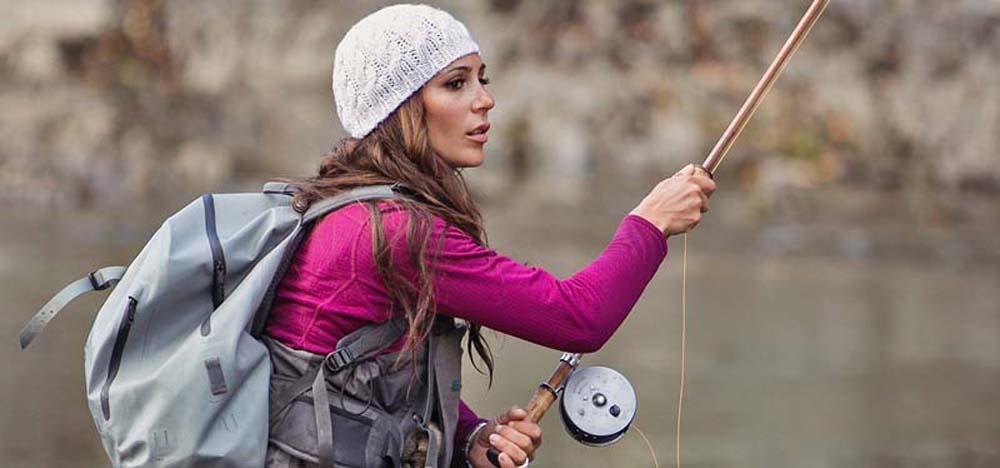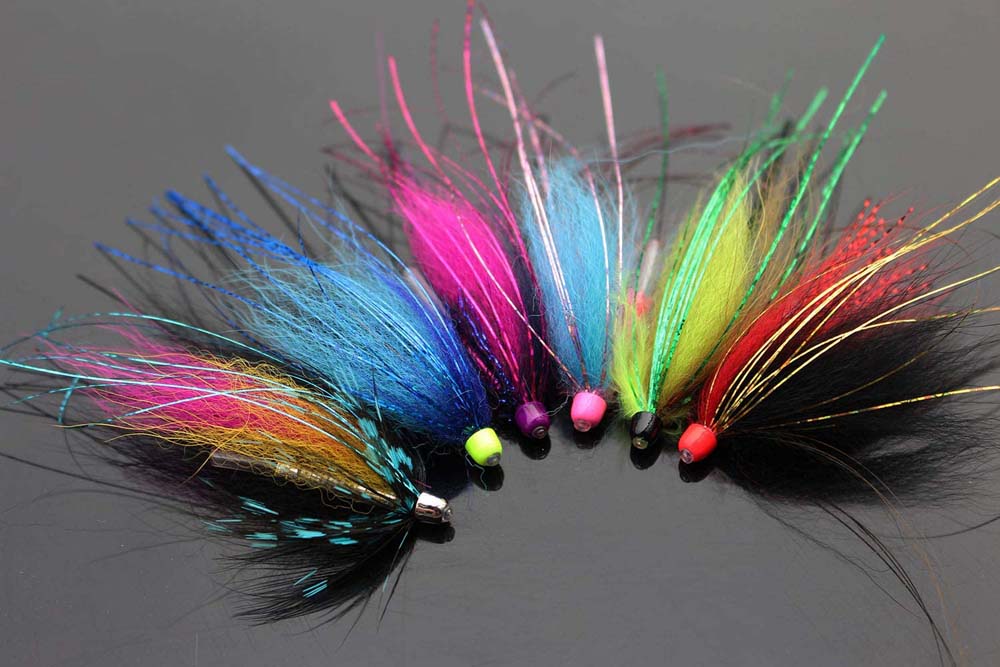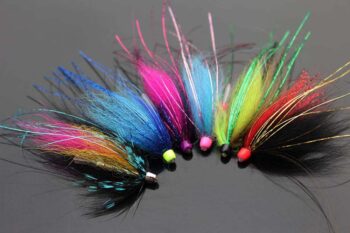
“The compleat” caster, April Vokey. Image Patagonia. Vokey has been into tube flies since the world began. On the seventh day she discovered Q-tips and the tube fly was born. Watch the YouTube video at the end and she’ll give any and all a lesson worth remembering on tube flies.
Tying on flies with large hooks are not the best thing for the fish, nor are long stinger hooks a good idea compared to all the options available when using tube fly
By Skip Clement
1. You don’t need expensive adaptations to your vise.
a. You do not adopt a new way of tying, it’s same as . . .
b. A supply of tubes is an expense.
c. You can use substitute tubes, like Q-Tips, but they can shatter if hitting a rock, get hung up on coral, or during very cold weather.
2. Change out hook sizes at any time.
3. Set a hook at the end of the fly at any size, length, or angle.

Assorted Cone Head Tube Flies – salmon, steelies, trouts.
4. You don’t need to leave the water to change anything on a tube fly:
a. add weight – tungsten
b. change fly color/s
c. increase or decrease hook size
d. add larger fly
5. There’s no hook eye on a tube.
6. Your fly will last seasons because it will slide out of the way preventing the fish from using the ‘fly’ as leverage.
7. All the hoopla about junction tubing need not apply – just a tube, tie the feathers as usual, and add a hook and a stinger hook if desired.
8. No special knots to tie.
9. Carry different hooks in your pocket [packet].
10. Carry flies in your pocket.
Check this out . . .


